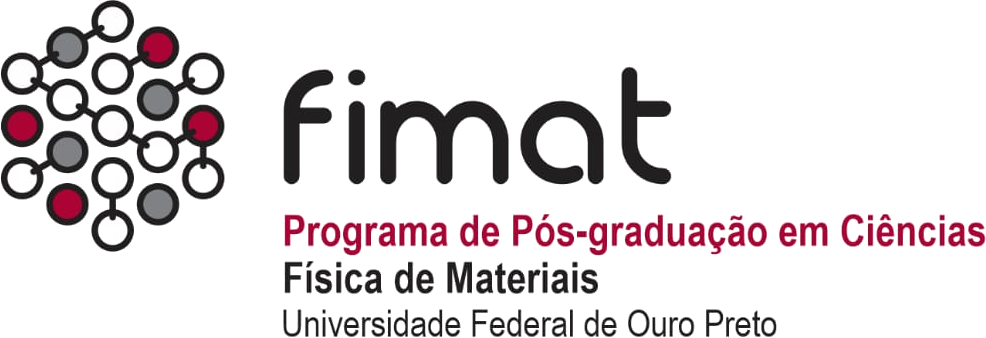Paulo Ricardo Silva da Camargo, Ronielson Gaia da Silva, Newton Uhôa Pimentel Barbosa, Antônio Valadão Cardoso, Paulo Santos Assis, and Afonso Pelli. 2022. “
What is known about parasitic interaction in Limnoperna fortunei (Dunker, 1857) in the Lower Rio Grande Basin.” Research, Society and Development, 11, 7, Pp. e51811730214.
Publisher's Version Elizane E. de Moraes, Alysson A. Pinto, Ronaldo J. C. Batista, Alan B. de Oliveira, and Helio Chacham. 2022. “
Charge and Spin Current Rectification through Functionalized Boron Nitride Bilayers.” The Journal of Physical Chemistry C, Pp. null.
Publisher's Version Samuel M. Vasconcelos, Natália P. Neme, and Mario S. C. Mazzoni. 2022. “
Covalently Linked Porphyrins as One-Dimensional Conductors.” The Journal of Physical Chemistry Letters, Pp. 10788-10792.
Publisher's Version Geovani C. Resende, Guilherme A. S. Ribeiro, Orlando J. Silveira, Jessica S. Lemos, Daniel Rhodes, Luis Balicas, Mauricio Terrones, Mario S. C. Mazzoni, Cristiano Fantini, Bruno R. Carvalho, and Marcos A. Pimenta. 2022. “
Effects of dimensionality and excitation energy on the Raman tensors of triclinic ReSe2.” Journal of Raman Spectroscopy, n/a, n/a.
Publisher's VersionAbstractAbstract In this work, we present measurements of angle-resolved polarized Raman spectra of single-layer (1L) and bulk ReSe2 recorded with excitation energies of 1.92 eV (647.1 nm) and 2.34 eV (530.8 nm). The Raman tensors for all modes were obtained by fitting simultaneously the angular dependence of the parallel (I‖) and crossed (I⊥) polarized intensities. We observed that the tensor elements are, in general, complex numbers, and their magnitudes and phases depend on both the dimensionality of the sample (1L or bulk) and the excitation energy. Results are discussed by considering the intrinsic contribution of a single layer to the tensor elements and the macroscopic contribution coming from the stacking of several layers. We show that the different behaviour of angle-resolved polarized Raman spectra for different excitation energies is due to the resonant Raman effect, which affects both the real and imaginary parts of the Raman tensor elements. Our work highlights the importance of understanding the fundamental physics of low symmetry 2D materials that can be used to fabricate devices sensitive to the direction of light polarization or electrical current.
Mauricio V. Bessa, Wellington D. Freitas, Natália P. Neme, Luiz G. P. Martins, Ana P. M. Barboza, Matheus J. S. Matos, Mario S. C. Mazzoni, and Bernardo R. A. Neves. 2022. “
Electromechanical Modulations in Transition Metal Dichalcogenide Nanosheets: Implications for Environmental Sensors.” ACS Applied Nano Materials, Pp. null.
Publisher's Version Raphaela de Oliveira, Luis A.G. Guallichico, Eduardo Policarpo, Alisson R. Cadore, Raul O. Freitas, Francisco M.C. da Silva, Verônica C. de Teixeira, Roberto M. Paniago, Helio Chacham, Matheus J. S. Matos, Angelo Malachias, Klaus Krambrock, and Ingrid D. Barcelos. 2022. “
High throughput investigation of an emergent and naturally abundant 2D material: Clinochlore.” Applied Surface Science, 599, Pp. 153959.
Publisher's VersionAbstractPhyllosilicate minerals, which form a class of naturally occurring layered materials (LMs), have been recently considered as a low-cost source of two-dimensional (2D) materials. Clinochlore [Mg5Al(AlSi3)O10(OH)8] is one of the most abundant phyllosilicate minerals in nature, exhibiting the capability to be mechanically exfoliated down to a few layers. An important characteristic of clinochlore is the natural occurrence of defects and impurities which can strongly affect their optoelectronic properties, possibly in technologically interesting ways. In the present work, we carry out a thorough investigation of the clinochlore structure on both bulk and 2D exfoliated forms, discussing its optical features and the influence of the insertion of impurities on its macroscopic properties. Several experimental techniques are employed, followed by theoretical first-principles calculations considering several types of naturally-ocurring transition metal impurities in the mineral lattice and their effect on electronic and optical properties. We demonstrate the existence of requirements concerning surface quality and insulating properties of clinochlore that are mandatory for its suitable application in nanoelectronic devices. The results presented in this work provide important informations for clinochlore potential applications and establish a basis for further works that intend to optimize its properties to relevant 2D technological applications through defect engineering.
Mário Mazzoni, J. R. Toledo, Everton Pereira-Andrade, Klaus Krambrock, Luiz A. Cury, Ângelo Malachias, and Gustavo Almeida Magalhães de Sáfar. 2022. “
The special case of the spectral emission of a Tb3+ mono metal complex.” ChemPhysChem, n/a, n/a.
Publisher's VersionAbstractThe fine structure in the spectral lines of the visible fluorescence of Tb 3+ complexes are replaced by a single peak in the case of a singular molecular complex Tb(H 3 PTC) 3 , where H 4 PTC represents perylene-3,4,9,10-tetracarboxylic acid, and its emission wavelength depends on the film thickness. This single peak challenges the old creed that the f-orbital electrons of Tb 3+ are always protected from the influence of the surrounding atoms. We perform density functional theory calculations to show that the wavefunction of the ground state is localized and in addition, spin-polarized, and this facilitates fluorescent transitions under UV to the first excited state instead of the fundamental state. We discuss the possibility of making a spintronic device with the molecule, Tb(H 3 PTC) 3 .
